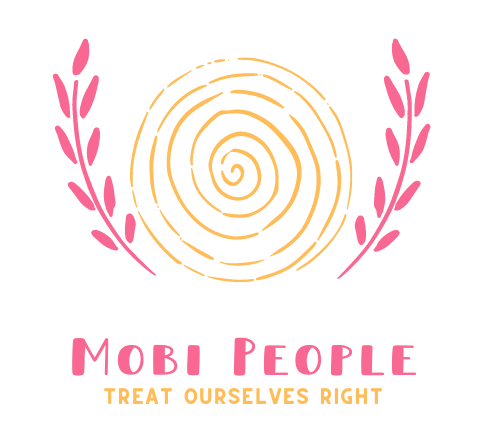Energy healing is gaining recognition as a complementary approach to modern therapy, appealing to those seeking holistic wellness. Traditional therapy often focuses on the mind, whereas energy healing addresses the energetic aspects of individuals, offering a broader perspective on healing. By integrating these two modalities, individuals may experience enhanced emotional and physical well-being, leading to a more comprehensive healing journey.
Many therapists are now exploring energy healing techniques to support their clients. This combination can lead to deeper insights and more effective coping strategies, allowing clients to navigate their challenges with greater resilience. Practitioners of both fields can provide a more enriching experience, tailoring their methods to meet the unique needs of each individual.
As interest grows in alternative healing practices, understanding how energy healing complements modern therapy becomes essential. Individuals who are open to exploring these combined approaches may discover greater empowerment in their healing processes. This exploration could transform not only their mental health but also their overall quality of life.
Foundations of Energy Healing and Modern Therapy
Energy healing and modern therapy both aim to enhance well-being, but approach healing from different angles. Understanding their foundational concepts provides insight into how they can complement each other in promoting holistic health.
Principles of Energy Healing
Energy healing is based on the belief that an unseen energy field surrounds and permeates the body. This energy, often referred to as qi, prana, or life force energy, influences physical and emotional health. Practitioners use various techniques to manipulate these energy fields, promoting balance and healing.
Common methods include Reiki, acupuncture, and chakra balancing. These techniques aim to clear blockages within the biofields, allowing energy to flow freely. This flow can facilitate healing by enhancing the body’s natural processes and fostering a state of relaxation and clarity.
Core Concepts in Modern Therapy
Modern therapy focuses on psychological and emotional well-being, emphasizing evidence-based practices. It includes approaches like cognitive-behavioral therapy (CBT), talk therapy, and mindfulness. These methods help individuals recognize and modify negative thoughts and behaviors.
The integration of consciousness plays a crucial role. Therapists guide clients in exploring their thoughts and feelings, fostering self-awareness and resilience. This focus on mental processes aims to promote healing and personal growth, addressing both the emotional and cognitive aspects of healing.
Historical Evolution of Healing Practices
The evolution of healing practices spans centuries, with energy healing rooted in ancient traditions. Cultures worldwide have utilized energy-based methods, such as Traditional Chinese Medicine and Ayurvedic practices. These systems emphasize the importance of harmony within the human body and its connection to the universe.
Modern therapy has evolved more recently, influenced by developments in psychology and neuroscience. While initially separate, these fields are beginning to recognize the benefits of integrating approaches. As research advances, there’s growing interest in how energy therapies can enhance therapeutic outcomes, leading to a more comprehensive understanding of health and healing.
Ways Energy Healing Complements Modern Therapy
Energy healing serves as a beneficial adjunct to modern therapy by enhancing well-being, addressing chronic health issues, promoting relaxation, and supporting holistic healing approaches. It offers unique benefits that help individuals navigate their physical and emotional challenges.
Enhancing Physical and Emotional Wellbeing
Energy healing techniques can foster a significant improvement in an individual’s physical and emotional well-being. Approaches like Reiki and therapeutic touch aim to balance energy levels in the body, promoting emotional healing and alleviating feelings of anxiety.
Research supports that when energy blockages are cleared, individuals often experience a sense of peace and emotional clarity. This practice can complement traditional therapy methods by providing a more rounded approach to mental health, ultimately leading to a better quality of life.
Addressing Chronic Pain and Health Issues
Chronic pain conditions, including migraines and arthritis, often leave individuals seeking effective relief. Energy healing has been reported to reduce pain levels and improve overall quality of life.
Studies indicate the capacity of energy healing to promote relaxation, which can decrease muscle tension and inflammation. This benefit can lead to heightened physical comfort and a decreased reliance on medication. Collaborative treatment plans that integrate energy therapies with standard medical care may yield favorable outcomes.
Supporting Stress Relief and Relaxation
Stress relief is crucial in today’s fast-paced environment. Energy healing practices can induce deep relaxation, counteracting stress responses in the body. Techniques such as breathwork and guided meditation help individuals enter a calm state, promoting mental clarity.
This relief has a cascading effect, reducing anxiety and enhancing focus. By incorporating energy healing into a wellness routine, individuals may find they can better manage stress, improving both mental and physical health.
Promoting Holistic Healing Approaches
Energy healing aligns with holistic principles by addressing the interconnectedness of body, mind, and spirit. This approach encourages individuals to understand their health from a comprehensive perspective.
Practitioners emphasize self-awareness and personal responsibility, guiding individuals on their journey of spiritual growth and emotional healing. Energy healing therapies can thus act as a complement to psychotherapy, fostering not only personal development but also a deeper understanding of one’s own health challenges.
Popular Energy Healing Techniques Integrated With Therapy
Energy healing modalities are increasingly being integrated with modern therapeutic practices. These techniques, including Reiki, chakra balancing, and acupuncture, provide additional layers of support for emotional and physical well-being.
Reiki Practices and Reiki Treatment
Reiki is a form of energy healing that originated from the work of Mikao Usui. Practitioners believe that they can channel universal life energy through their hands to promote relaxation and healing. Reiki treatments often involve the recipient lying down while the practitioner lightly places their hands on or near the body. This practice can help reduce stress and anxiety, allowing for deeper emotional processing.
Numerous studies suggest that Reiki may enhance overall well-being, making it a valuable complementary therapy for those seeking holistic care. By integrating Reiki with conventional therapy, clients often report increased comfort and emotional clarity during their healing journey.
Chakra Balancing and Energy Centers
Chakra balancing focuses on the seven energy centers in the body, known as chakras, which correspond to physical, emotional, and spiritual aspects of well-being. Each chakra is associated with specific attributes and locations within the body.
Practitioners use various methods, including meditation, visualization, and crystal healing, to align and balance these energy centers. Techniques like sound therapy or guided imagery may also be applied to enhance chakra alignment.
Maintaining balanced chakras can significantly improve emotional health and overall life satisfaction. This practice often complements traditional therapeutic techniques, creating a more comprehensive approach to healing.
Traditional Chinese Medicine and Acupuncture
Traditional Chinese Medicine (TCM) encompasses a range of practices, with acupuncture being one of the most recognized. Acupuncture involves inserting thin needles at specific points on the body to stimulate energy flow, or Qi.
This technique is believed to help restore balance in the body, which can alleviate physical pain and emotional distress. TCM also utilizes herbs, dietary recommendations, and lifestyle changes in conjunction with acupuncture.
The integration of TCM with conventional therapies has shown promising results for various conditions, including stress relief and improved mental clarity. Many individuals find that acupuncture enhances the therapeutic effects of their standard treatment plans.
Integration of Energy Healing in Healthcare Settings
Energy healing can enhance conventional medical practices, offering additional therapeutic options for patients. The integration of these practices can create a more holistic approach to healthcare, focusing on both physical and emotional well-being.
Collaboration Between Energy Healers and Medical Professionals
Collaboration between energy healers and medical professionals is crucial for successful integration. Healthcare providers may refer patients to certified energy healers who specialize in various modalities, such as Reiki, sound therapy, and crystal healing. The shared goal is to promote healing through a synergistic approach that supports the body’s natural ability to maintain homeostasis.
Regular communication between energy healers and medical practitioners can facilitate a coordinated care plan. This allows for a comprehensive understanding of a patient’s needs, covering physical health, emotional well-being, and self-care strategies. The combined efforts can enhance recovery from injuries and improve the overall quality of care.
Training, Certifications, and Standards of Practice
To ensure safety and effectiveness, energy healers often pursue training and certifications in specific modalities. Various organizations provide guidelines and educational resources, promoting standards of practice. These certifications may include training in emotional freedom technique, guided meditation, and other energy treatment methods.
Medical professionals play a vital role in evaluating the qualifications of energy healers. This scrutiny helps ensure that patients receive trustworthy and effective care. Aligning energy healing practices with established healthcare standards fosters trust among patients and professionals alike.
Patient Experiences and Quality of Care
Patient experiences with energy healing can significantly affect their perceptions of care quality. Many individuals report improved emotional well-being, reduced stress, and enhanced recovery through energy treatments. Techniques such as massage and self-healing practices can increase positive thoughts and release endorphins, further supporting physical and mental health.
When patients engage actively in their healing journey, they often experience greater satisfaction. Energy healing may also enhance the effects of traditional therapies, offering a complementary approach that aligns with patients’ desire for natural healing methods. Integrating energy healing in healthcare settings can lead to a more personalized and effective patient experience.


